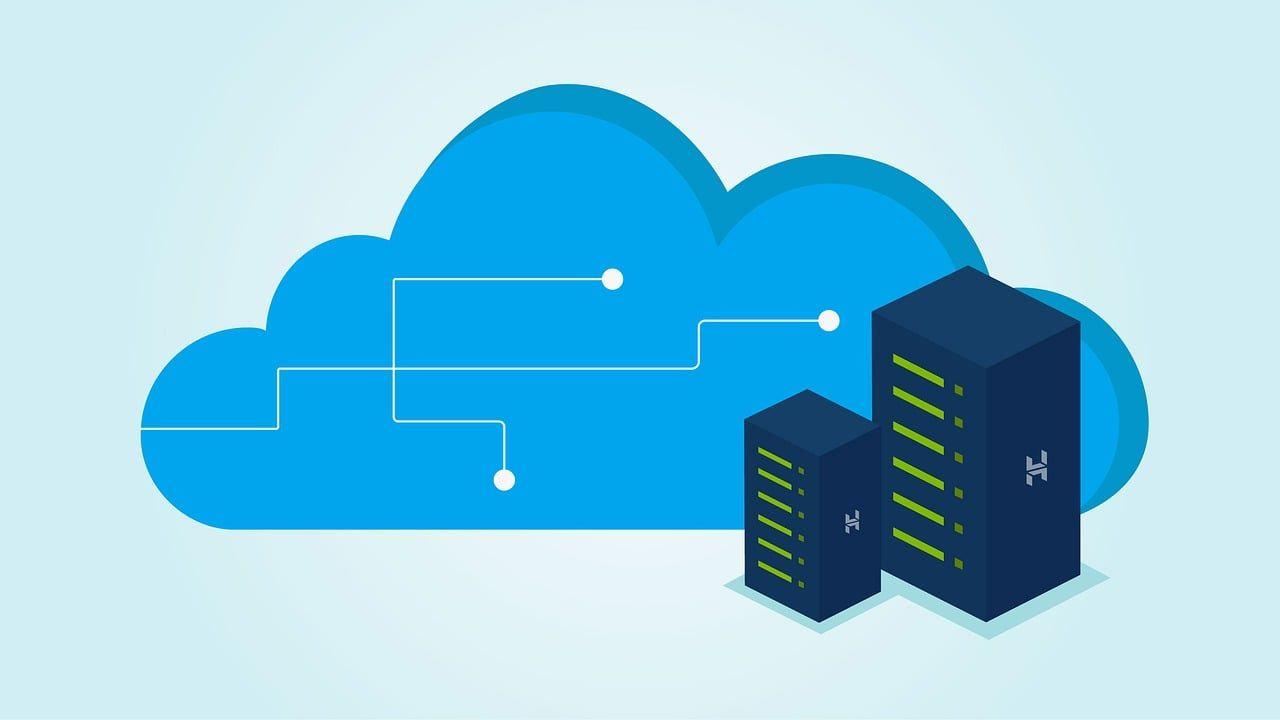
Deceptive pricing
Deceptive pricing is a method in which traders use deceptive means such as “original”, “former”, or “regular” pricing quotes for the bulk of a season to mislead prospects and customers into thinking that they’re paying less money for products. The Federal Trade Commission prohibits companies from using such deceptive practices towards consumers. 4 Deceptive Pricing Practices to Avoid Former price comparison Drip pricing Pressure selling Strikethrough pricing Nowadays, when market competition is high, brands resort to different methods to attract the attention of customers. This includes various methods of marketing or pricing practices to drive the interest of as many people as possible and thus increase revenue. Many of these methods are against the law and violate consumer rights. Such practices may be subject to enforcement action so it is critical to be aware and avoid them. We’ll consider the most popular practices to avoid when buying products from different brands. Former Price Comparison In this case, a retailer offers a bargain on certain items by informing customers that its price is lower than a previous one. The company proves that the product is "discounted" by placing the inflated former price to show the difference. Drip Pricing This practice means only a part of a product's price is advertised with the total amount revealed at the end of the purchasing process. Additional costs such as local hotel taxes, booking fees, or resort fees are often not included in the ad or “dripped.” This deceptive pricing practice is often associated with the hospitality industry: airlines showing the price of a ticket excluding some mandatory fees, hotels not including local taxes, etc. Pressure Selling Some companies use emotional manipulation, limited-time offers, and long monologues from sales reps to make people buy products. High pressure can help generate more sales and increase revenue. However, these manipulative steps are illegal and violate customers’ rights. Strikethrough Pricing Cross-out or strikethrough prices are presented in the form of pricing comparison to attract the attention of consumers. Saving is made in comparison to the manufacturer’s recommended retail price. Companies use strikethrough pricing to win more customers since they see a tangible reduction in price. There are many types of pricing practices that mislead customers into thinking that they obtain items for a lower cost. We've mentioned the most popular that you can see in everyday life. Now let’s find out how to fight these deceptive actions. How to fight deceptive pricing Sometimes you may overpay because of the deceptive pricing practices used by some retailers use. However, fighting back can feel impossible since these actions are hard to prove. As soon as you notice that some of the retailers are breaking the FTC rules, you can take several measures. Collect evidence. The first thing you need to do is to collect all sorts of evidence that indicate there was price deception. It may be anything that can prove the deception by the seller: advertising in a newspaper or magazine, a TV commercial, post on social media, etc. You need to get a recording, screenshot, or an article in the newspaper that supports your claim. Submit a complaint. As an option, you can file a complaint to the FTC, an independent agency responsible for consumer protection. You can submit it online by following the instructions or reach an agent by phone. Yet there is no guarantee that this organization will investigate your case and return your money if you’ve overpaid. Ask for a refund. If a company acted unfairly towards you, as a consumer you have the right to ask for a refund. Firstly, contact customer service by using live chat, email, or calling them. Explain the situation and ask them to resolve it. If they don’t react to your complaints, you can also use social media to prevent other people from getting into the same situation. Many retailers avoid this scenario as it may damage their reputation. So they will help you with your problem quickly. Now that you know how to fight deceptive pricing and defend your consumer rights, let’s proceed to the examples. Deceptive Pricing Examples Many cases demonstrate brands misleading customers into believing that they’re buying products at a discount. The price may remain the same or even increase. This can happen due to a price increase before a discount or additional mandatory payments. So let’s consider several examples where deceptive pricing occurred. Hospitality industry This industry is often associated with drip pricing. Airlines may show discounted ticket prices but exclude baggage fees, seat selection fees, taxes, and other costs required to travel. Hotels show the prices on rooms without including local taxes or resort fees. May D&F department store In 1989, the Colorado Attorney General's office accused a unit of the May Department Stores of practicing deceptive advertising in its home department. Since 1986 May had used exaggerated former prices as a basis for comparison against prices after a discount. Since deceptive pricing practices arise quite often, you need to be able to identify and unravel them. Consider the three steps above to protect your rights and fight deceptive pricing.

Dedicated IP address
A dedicated IP is a feature offered by an email service by which you can send out all your mailings from just one specific IP address. In this case, no other users will be sending emails out from this address. This will have a positive impact on the reputation of your mailings, as well as on the percentage of emails opened and the number of conversions. This is generally something that mailing list services provide for an additional fee, or it is activated for free at higher rates. In this video, you'll get to know the benefits of a dedicated IP address.

Delivering Personalized Experiences with a Single Customer View
Every interaction a customer has with a business, be it an online purchase, a visit to a physical store, a customer service call, or a social media engagement, is a valuable piece of a larger puzzle. Individually, these pieces provide a fragmented understanding of the customer’s story. But the true value lies in assembling these pieces together to reveal the complete picture. A Single Customer View (SCV) is a consolidated, holistic view of each customer which integrates data from various touchpoints. It’s the key to unlocking the full potential of customer data, driving effective customer engagement, and maintaining a competitive edge in an increasingly customer-centric market. What is a Single Customer View? A Single Customer View (SCV) is a comprehensive view of customer data across all interactions and touchpoints with a business or organization. It brings together information from various sources, channels, and departments within an organization to create a cohesive and accurate profile of an individual customer. The primary objective of a Single Customer View is to provide businesses with a complete understanding of their customers’ needs, preferences, and behaviors. This enables businesses to deliver personalized customer experiences, improve customer satisfaction, and enhance customer loyalty. Furthermore, an SCV aids in making informed business decisions, optimizing marketing strategies, and identifying opportunities for cross-selling and up-selling. Essentially, SCV is creating a unified and centralized snapshot of a customer’s interactions with a company. Types of Customer Data Collected in a Single Customer View Customer data comes from diverse sources, each providing unique insights into customer interactions and behaviors. The consolidation of these key data sources from various channels contributes to a comprehensive understanding of individual customers. The key types of customer data typically include: Transactional Data: Information about the customer’s purchases, transactions, and order history, such as product details, quantity, price, and date of purchase. This data helps businesses understand what products or services the customer has bought and their spending patterns. Interaction Data: Details about the customer’s interactions with the business across different channels. This may include website visits, social media interactions, emails, and other forms of engagement. Understanding how a customer interacts with the company helps tailor communication and marketing strategies. Demographic Information: Basic personal details such as the customer’s name, address, contact information, age, gender, and other relevant demographic data. This information provides a foundational understanding of who the customer is. Preferences and Behavior: Insights into the customer’s preferences, behaviors, and choices. This data may include product preferences, communication channels, and specific interests. Understanding customer preferences enables businesses to offer more personalized experiences. Customer Service History: Records of the customer’s interactions with customer support, including inquiries, issues raised, and resolutions provided. This data helps improve customer service and ensures a consistent and positive experience. Feedback and Reviews: Information on customer opinions, including feedback surveys, ratings, and reviews. This data may include comments, ratings on a scale, and testimonials. It is valuable for sentiment analysis, identifying areas for improvement, and shaping future interactions. Marketing Responses: Data on how customers respond to marketing efforts, including metrics like open rates for emails, click-through rates on advertisements, and conversion rates from promotional campaigns. Understanding how customers engage with marketing efforts helps refine future campaigns for better effectiveness. Social Media Data: Insights from the customer’s social media presence include data such as the number of followers, engagement metrics (likes, shares, comments), and information from linked social media profiles. This provides insights into the customer’s online presence and can be valuable for targeted marketing and engagement strategies. Benefits of Single Customer View Building a SCV transforms the way organizations operate, reducing costs, saving time, and elevating profitability. Let’s explore how SCV streamlines processes and enhances outcomes for the benefit of businesses and all stakeholders involved. Personalized and Targeted Marketing: A 360-degree customer view, enriched with insights into preferences, behaviors, and historical interactions, empowers marketers to create highly personalized campaigns. By segmenting customers based on specific criteria and updating profiles in real-time, businesses tailor content to meet unique needs. Customers are more likely to respond positively to messaging that resonates with their specific preferences, contributing to overall profitability, as affirmed by 90% of top marketers. Improved Audience Segmentation: By consolidating data from diverse sources into a centralized repository, SCV creates a comprehensive and up-to-date profile for each customer. This 360-degree customer view allows businesses to categorize their customer base into distinct segments based on various criteria such as demographics, behavior, and preferences. Marketers can leverage this segmentation to create more focused and relevant campaigns for specific customer segments. Precision in targeting ensures that messages reach the right audience, optimizing marketing spend and improving overall effectiveness of marketing efforts. Enhanced Cross-Sell and Upsell Opportunities: The ability to identify and capitalize on cross-sell and upsell opportunities is a valuable outcome of a unified view of a customer’s interactions, purchases, and preferences. By understanding the customer’s history, businesses can strategically recommend products that the customer typically purchases together, leading to increased average transaction values. Leveraging insights gained from customer history for cross-selling and upselling contributes to maximizing the lifetime value of each customer, as businesses can tailor their offerings based on a comprehensive understanding of individual customer needs. Proactive Issue Resolution: A comprehensive customer view equips customer support teams with a holistic perspective of a customer’s history and interactions across channels. This insight allows organizations to identify potential issues before they escalate and take preemptive measures to address concerns. Anticipating customer needs and resolving issues promptly enhances overall customer satisfaction. Quick and proactive issue resolution mitigates potential negative experiences and contributes to positive brand perception, fostering customer loyalty and retention. Customer Journey Optimization: Understanding the complete customer journey is essential for effective marketing. SCV provides insights into every touchpoint and interaction a customer has with the brand. Marketers can use this information to map out and optimize the entire customer journey, ensuring a seamless and engaging experience. This optimization contributes to increased customer satisfaction and loyalty as customers move smoothly through each phase of their interactions with the brand. How to Create a Unified Customer View The following steps outline the process of creating a unified customer view, providing a roadmap for businesses to effectively consolidate and leverage their customer data. Each step plays a critical role in ensuring the accuracy, completeness, and usability of the customer profile. Data Collection: The first step is data collection, which involves gathering customer data from various sources. These sources could include sales records, website interactions, customer service communications, and customer surveys. The goal is to capture a wide range of data that reflects all aspects of the customer’s interactions and experiences with your business. Data Integration: The next step involves consolidating data from different sources and channels into a single source of truth. The aim of data integration is to create a unified, coherent set of data that provides a comprehensive view of each customer. This process may involve cleansing data to remove errors or inconsistencies and transforming data to convert it into a common format that can be easily analyzed and interpreted. Identity Resolution: Identity resolution refers to linking various identifiers like email addresses or phone numbers to create a singular customer profile. This process ensures that data from different interactions is correctly attributed to the same customer, providing a comprehensive, rather than disjointed view of their behavior. The goal is to ensure that all data points related to a single customer are connected, providing a complete picture of that customer’s interactions with your business. Create a Centralized Customer Database: This step involves establishing a centralized repository or database for storing unified customer data. Various platforms can be leveraged for this purpose, including traditional relational databases, modern NoSQL databases, data warehouses, or cloud-based storage solutions. The choice of platform depends on factors such as data volume, real-time processing needs, security requirements, and budget. It is important to ensure that the database’s structure facilitates easy access and efficient data analysis. Share Data Across the Organization: The final step is to share the data across the organization in a secure and compliant manner. This involves making the central customer data hub accessible to all relevant departments within your business, such as sales, marketing, customer service, and product development. By having access to the unified customer view, teams can gain a better understanding of the customers. This helps them to tailor their strategies based on the insights gained from the data and work together to provide a consistent and personalized customer experience. Conclusion As enterprises navigate through ever-evolving customer needs and preferences, the importance of building a SCV becomes increasingly evident. It serves as a strategic tool, consolidating data from various touchpoints to provide a summary of each customer’s journey. This holistic understanding enables businesses to create experiences that resonate with customers, making them feel valued and understood. In this context, solutions like LIKE.TG, with its advanced data integration and management capabilities, are instrumental. It aids in creating an effective SCV, allowing businesses to seamlessly consolidate and analyze customer data. This empowers businesses to deliver personalized experiences, fostering customer loyalty and driving growth. Download our eBook now and take a step towards a customer-centric approach.

Delivery errors
Delivery errors are the reasons that your email campaign was not delivered. To investigate errors, you can view the statistics report. Common Errors with Email Campaign Delivery "Temporarily unavailable" means that the sending failed because the recipient’s email server was unavailable or rejected the message. "Address doesn’t exist" means that the email address is not on the domain. This error happens because users may have mistakenly entered the wrong email address on the subscription form. That is why it’s best to use a double-opt-in form of subscription in which the subscriber confirms his or her desire to receive your mailings by clicking the link in the opt-in confirmation email. "Spam" means that the recipient’s server rejected receiving your email, equating it to be spam. "Mailbox full" means that the subscriber’s inbox is full and has no way to receive your email. In this case, resending can be done after three days. "Marked spam by user" means the user marked your letter as spam, and his or her email address will be automatically transferred to the list of consistently unavailable emails. LIKE.TG offers an Email Verifier tool that helps marketers remove invalid email addresses from their lists and keep an email deliverability rate high. Follow this step-by-step guide to verify your email addresses.

Delivery rate
Not only your email copywriting matters but the email service you've chosen matters, as well. The domain reputation of your email service plays a huge role in your campaign's success. Using an email service with a good reputation allows your emails to pass through spam filters without a sweat. How to Calculate an Email Delivery Rate Email delivery rates are calculated by dividing the number of emails sent minus bounces by the number of emails sent. You should remember that the number of emails sent is not the same as the number of emails delivered because when you send mailings, some emails may have bounced. Bounces are emails that can’t be delivered to recipients’ inboxes. Email Bounce Classifications Hard bounce Soft bounce Hard bounce This happens when an email can't be delivered because the recipient’s address is invalid, or the email domain doesn’t exist. Find out more. LIKE.TG offers an Email Verifier for you to check your mailing list before sending a campaign. This tool detects invalid email addresses and removes them from your mailing list. As a result, you send emails to valid addresses and your email deliverability is high. Soft bounce This happens when an email can't be delivered because of one of the following reasons: the recipient’s inbox is full, your email is too large, or the server is down. Find out more. As an email marketer, you should always track the delivery rate of all your email campaigns. Your goal is to achieve a delivery rate of 95% or higher. If the delivery rate of your email campaigns is reduced each time, then it’s time to examine your mailing list. Maybe it has too many invalid email addresses. Also, pay attention to your subject lines and content. Perhaps they consist of words that ESPs usually block, equating these messages to spam. With our service, tracking your delivery rate is a simple process. You need to open your statistics report. LIKE.TG has a high reputation score, which helps increase the open rate of your email campaigns. Let LIKE.TG deliver your emails! Our sender reputation score is high, so there's no need to take extra measures. Send emails from LIKE.TG and enjoy high email deliverability. Register and send an email campaign! Try it for yourself with our free pricing plan for small businesses. If your mailing list has fewer than 500 subscribers, send up to 15,000 emails totally for free every month. Make use of marketing tools like personalization, segmentation, subscription forms, A/B testing, ready-made email templates. Enjoy them at no cost! Create an email campaign

Demand analysis
Demand analysis is the research conducted by companies that aim at understanding customer demand for a certain product. Businesses generally use it to determine whether they can successfully enter the market and obtain the expected profit. During this process, the management decides on cost allocation, production, advertising, pricing, etc. A new firm can easily figure out if there's a significant demand for the product they offer and receive information about the number of competitors, the growth of the industry, etc. Demand analysis techniques allow entrepreneurs to determine the main business areas with the highest demand. Low demand for a specific product indicates that it does not fulfill customers' needs and perhaps has little value for them. Some of the causes of low demand include the incompatibility of products with the market, poor digital marketing, competitors that offer better alternatives, etc. Why is demand analysis important? A company's success or failure depends on the ability to identify and satisfy customers' needs. In today's market, every business needs to understand consumer behavior and hold inventory accordingly. Demand analysis brings many insights essential for the decision-making process. After conducting research, companies obtain knowledge crucial for sales forecasting, product pricing, costs on marketing and advertising, financial decisions, and production. Let's take financial decisions, for example. The demand for a product affects the financial decisions of a specific company. Suppose there's a high demand for a firm's product, and it's constantly growing. In that case, it requires additional costs on the production of more products and quality improvement, advertising to reach more customers, and boosting the marketing team's capabilities. The pricing policy of a company also depends on consumer demand. Understanding the trend of customer demand helps businesses decide whether to increase or decrease the price of their product. If you aim to understand your leads and customers and succeed in your industry, demand analysis should be an integral part of your business. We've already revealed the importance of this process, so now let's take a look at its objectives. Objectives of Demand Analysis Evaluating customers' response towards a product Formulating a pricing policy Sales forecasting Establishing a production policy Any business can fail when they don't fulfill consumer demand. Hence, some of the decisions a company makes can be at risk. If your company aims to eliminate this possibility, you can use demand analysis to determine customer demand for a particular product. This process has several objectives. Evaluating customers' response towards a product. Gaining and monitoring customer feedback is vital if your goal is to see customers' reactions to your new product. This is a great way to find out whether consumers are satisfied with your goods or if there's still something you can improve. Formulating a pricing policy. You can set the prices after having analyzed the demand thoroughly. Understanding the trend of consumer demand allows you to quickly decide whether to increase or decrease the price for a particular product. Remember, companies can't set prices without understanding the inclinations of their target audience. Sales forecasting. It enables you to make informed business decisions and predict your company's performance. With a detailed analysis, you can estimate your future sales. Sales forecasting can give you insights and tips on managing your firm's cash flow, resources, and workforce. Besides the proper allocation of resources, it helps you predict sales revenue. Establishing a production policy. It enables you to define the gap between demand and supply. You can estimate the necessary number of raw materials to maintain the regular supply. Besides, your company can utilize resources to the maximum if your operations are based on forecasts. Now that you know that demand analysis can bring a lot of valuable data for your business success, let's review how to perform demand analysis. How to Do Demand Analysis Identify the market Assess the business cycle Create a product that meets a particular niche Define your advantage Determine your competitors To define whether a company can easily enter the market and obtain the expected profits, businesses use demand analysis that helps understand the customer’s need for a product or service. There are five steps to consider. Identify the market. The first thing you should do is to identify the market you would like to target with your new goods. For this purpose, firms conduct market surveys to receive feedback from customers about the product and understand the level of customer satisfaction. If clients demonstrate dissatisfaction with it, companies try to develop a product so that it meets the customer demand. Assess the business cycle. Once a market is defined, you can proceed to evaluating the stage of the business cycle. It has three stages. In the first, emerging stage, there’s high customer demand and a low supply of goods. In the second, plateau stage, the supply of products meets the market demand. In the third, declining stage, the demand for the products is lagging. Create a product that meets a particular niche. You need to create a product that suits a certain niche within the market. Develop your products so that they can meet the needs of your consumers. Also, customers should be able to distinguish your goods from competitors’ alternatives. Define your advantage. Developing products that can resolve customers’ problems allows you to create a sense of usefulness and increase demand. Let’s take iPods or iPhones, for example. These products increased the demand by entering the personal electronics market because they were perceived by customers as useful products. Determine your competitors. Define the number of your competitors and their market share. It depends on the stage of the business cycle you’re in. For example, in the emerging stage, you’ll have fewer competitors which will allow you to obtain a higher profit margin. To sum it up, demand analysis is an essential step before making any business decisions. Companies should understand consumer behavior that defines the demand for a specific product within the market.

Demand generation
Demand generation is using inbound marketing to create interest in a specific product and boost brand awareness. It helps companies generate more qualified leads and revenue. In this article, we’ll unveil why demand generation is important and how it works. We’ll also compare demand and lead generation and cover 8 effective strategies. Why is demand generation important? Each company develops marketing and sales initiatives that impact the stages of the sales funnel. This way, brands strive to create awareness of the product they sell and show customers its value, and drive interest. Once they succeed in communicating their offers, businesses can create demand for their products. Their target audience will be aware of companies’ perks, their teams will have a longer list of qualified leads, and their owners will have higher profits. By creating interest among your target market, you can obtain a strong position. With demand generation, your team will focus on prospective customers and their needs. You’ll ensure seamless communication with potential clients, optimize interaction with them, and identify their pain points. As a result, you’ll be able to solve problems. Now that you know why demand generation is important, it’s time to figure out how it works. How does demand generation work? To make your demand generation strategy work, you need to complete several steps. First of all, you should create a consistent brand with a clear voice, style, branding, brand personality, and messaging across different communication channels. Every piece of content you publish on your website and social media should comply with your brand values. Secondly, work in hand with your sales team to align all your marketing efforts. Make sure to include a visible call to action button on your website so that your prospects can make the desired action. Your company should have an accurate buyer persona to meet the needs of customers. Identify their pain points to solve problems quickly. Many businesses leverage special software to reduce the number of tasks during the demand generation process. Once you implement your campaigns, analyze the results. Since demand generation is data-driven, you should pay attention to the effectiveness of your offers, messages, and conversions. Now that you know how demand generation works, it’s time to proceed to the next section to make the difference between demand and lead generation clear. Demand Generation vs Lead Generation Since there’s only a slight difference between demand and lead generation, we’ll review each of the terms in detail to see their features. Demand generation is a marketing strategy that encompasses businesses using inbound methods to reach new markets and communicate their offers. It enables brands to boost awareness and trust and educate potential customers about products. With demand generation techniques, marketers can make more people aware of the product and its benefits and generate customers’ interest. Lead generation is a process of nurturing prospects to convert them into customers. Marketers collect contact information of potential customers through lead generation forms, email campaigns, and lead capture forms. Companies provide users with various incentives and content in exchange for their contact information (emails, names, phone numbers, etc.). Demand generation focuses on making people aware of the company and generating interest, while lead generation aims at converting leads into customers by gathering contact information. The difference is clear, so we’ll cover 8 effective strategies. 8 Effective Demand Generation Strategies There are many ways to hook the audience’s attention and drive their interest in your product so that they want to purchase. We’ve prepared a list that consists of 8 effective strategies to boost demand for your product. Implement blogging. Quality blog posts are the source of helpful information in which customers can find solutions to their problems. Blogging is one of the marketing strategies that help drive traffic to your website and social media platforms, convert prospects into customers, build trust, and encourage customer loyalty. Conduct webinars. Real-time conversation with potential customers allows you to share the necessary content and provide information about your product. During the registration, participants provide you with contact information. You can use this data to complete your buyer persona and reach prospects through available channels. Create podcasts. Podcast marketing is increasingly popular among companies now. You can use paid ads on famous podcasts or create your audio to educate people about your industry and product. Once you succeed in making quality audios for your brand, you can establish personal connections with your target audience, generate traffic to your website, have a wider reach, and build brand authority and awareness. Upload educational videos on social media. A short informative video always catches the eye of a customer. If you manage to develop great videos to inform people about your product and communicate your main message, you can increase your customer base. With visual content, customers will remember you and recall your brand in the future. Consider email marketing. Since there are around 4.3 billion email users worldwide, to your leads. Email marketing is a traditional yet effective way to reach your potential customers at the right time, collect feedback, generate traffic, and increase sales. Run social media campaigns. Once you identify the social media networks your target market prefers, use them to connect with your prospects. Make use of paid ads to target potential customers, conduct engaging campaigns to encourage the use of your branded hashtag, and consider influencer marketing. Chatbots enable you to run your campaigns on the necessary social media networks. With LIKE.TG, you can have a wider reach by implementing our chatbots in messengers like WhatsApp, Facebook Messenger, Telegram, and Instagram. Collaborate with influencers. You can consider influencer marketing so that an opinion leader can endorse your product to followers. This way, you can boost brand awareness, reach more people, increase sales, and gain credibility and trust. Offer free tools. You can encourage customers to register with your service to try it by providing a free tool. If people enjoy your tool, they will recommend it to their friends. As a result, your reach will expand. Use our strategies to make your demand generation effective. Hope that our information will come in handy when you decide to improve your business.

Demand-side platform
A demand-side platform (DSP) is a platform that empowers companies to buy advertising inventory and manage it by using one interface. It helps control multiple ads in real time, monitor, and improve their performance. Companies try to optimize their advertising processes to reach their target audience properly and get the desired result. The process of buying and selling ads has become even easier with the help of DSP. In this article, we’ll unveil how a demand-side platform operates, discover the difference between a DSP and a supply-side platform (SSP), and see several examples. How does a demand-side platform work? If you implement demand-side platforms, you don’t need to pass through some additional independent networks since these platforms operate without their help. For example, in case you leverage Facebook Ads Manager, you can buy impressions directly on Instagram or Facebook. DSPs allow media buyers to purchase display, audio, and video ads, analyze, and manage them on various networks by using a single platform. First of all, platforms provide ad buyers with information about ad purchases from a publisher. The systems don’t imply buying ads directly from publishers or owning them. Companies should be aware of the fact that DSPs connect with SSPs via ad exchange to decide on the details of an impression. DSP has to bid higher for the impression if it’s a marketing manager who has already visited a company’s website. Now let’s make the difference between DSPs and SSPs clear. What is the difference between a demand-side platform and a supply-side platform? The key difference between a DSP and an SSP is that they network with the different parts of the programmatic ecosystem. The first service is leveraged by companies, agencies, and publishers to manage the purchasing process of ads. Using a DSP enables companies to reach different publishers from a single platform. The second platform is used to optimize the selling process of ad space. With an SSP, ad sellers can reach a bigger number of buyers through different ad exchanges. Now let’s jump into several examples. Examples of Demand-Side Platforms Amazon Advertising Platform Choozle Facebook Ads Manager If agencies, publishers, and brands manage campaigns through different networks, DSPs help control everything by using a single dashboard. This is one of the reasons many brands turned to the following platforms for help. Amazon Advertising Platform As an advertiser, you would probably like to reach new audiences and obtain more customers. With Amazon DSP, you have a great chance to buy advertising at scale on Amazon and other websites to reach people worldwide. Choozle With Choozle, you don’t need to worry about campaigns at scale because you can run them smoothly. Businesses can easily optimize their digital advertising with the help of the service. You can access targeting tools to optimize your digital advertising and evaluate its performance on Choozle. Facebook Ads Manager Open Facebook for business to explore Facebook Ads Manager, a typical example of a DSP. It allows companies and individuals to run ads on Facebook, Instagram, and Messenger. The service empowers advertisers to monitor the performance of their marketing campaigns and figure out the improvements to be made. To put it simply, DSPs allow businesses to simplify the process of negotiations between buyers and sellers of ads. As a result, advertisers can choose and purchase advertising inventory on a single platform. The service also empowers companies to monitor the results of each campaign by providing companies with reports and analytics.

Descargar filtros para WhatsApp
WhatsApp official has not provided any plug-ins or applications for user screening so far, so WhatsApp filter must be a WhatsApp marketing tool independently developed by a third party, mainly to help us quickly carry out our marketing work.WhatsApp Filter means a tool or feature for filtering or categorizing messages, contacts or other elements within the WhatsApp application. It can automatically categorize messages or filter them from specific contacts or groups based on certain conditions or settings.WhatsApp filters can operate based on different criteria such as sender, keywords, tags, priority, etc. It can help users find specific messages faster, better control and organize communication content, and improve efficiency and user experience.If we want to download the WhatsApp filter, we have to find a third party that makes WhatsApp filters on the market, such as LIKE.TG.LIKE.TG WhatsApp Filter, users can scan the QR code to log in to your WhatsApp account or import channel accounts or hash accounts in batches to filter, use your WhatsApp permissions to filter the target phone numbers registered for WhatsApp, and judge gender and age based on WhatsApp avatars. After filtering, you can export .txt/.xls/.xlsx/.vcf files.WhatsApp filter is actually WhatsApp number screening. Through the filtering conditions we set, such as screening profile pictures, personal signatures, age, gender, etc., enter the country code or code you want to filter, and quickly filter out active ones with one click. WhatsApp account.The main thing to note is that the WhatsApp filter is independently developed by a third party and not officially provided by WhatsApp, so some additional software fees will be incurred, and everyone should be clear about this.For descargar filtros para WhatsApp, the editor can provide you with a download link: https://www.LIKE.TG007.com/html/whatsapp.html

Detailed Explanation of Wa Filter Software
What is WhatsApp?WhatsApp is currently one of the top-ranked instant messaging tools globally, with coverage in over 180 countries and regions. It boasts over 2.7 billion monthly active users and is the most popular social software in some regions. It is incredibly well-received and widely used!What are the main uses of such an app?Most people use this app in their daily lives as a communication tool to interact with others, such as friends and colleagues. However, in the hands of marketers, this app serves a different purpose beyond mere communication; it is also used for promotional marketing, sending marketing-related information to others.This method has received unanimous praise from many marketers. Leveraging the app's popularity, large user base, and related auxiliary software, many marketers have achieved impressive marketing results. While many might think the success of using this app for marketing is mainly due to the app itself, the impact of related marketing software should not be underestimated.For instance, using Wa Filter can significantly enhance marketing effectiveness. Wa Filter allows you to customize and automatically generate phone numbers according to your requirements and then filter these generated phone numbers with a single click to check if they have registered WhatsApp accounts. This helps you continuously acquire WhatsApp numbers during the marketing preparation phase.Additionally, Wa Filter can filter out whether these accounts have personalized signatures or profile pictures. Based on this content, it can infer the users' age, gender, and language information. You can categorize and export these customer details, making subsequent marketing operations very convenient.LIKE.TG Wa Filter is an excellent WhatsApp auxiliary software. Through the most basic and safest generation and filtering operations, it helps you generate and filter out which phone numbers have registered WhatsApp accounts and detects the information corresponding to the WhatsApp accounts. This provides you with a continuous stream of users for your marketing efforts.

Detailed Explanation of WhatsApp Filters Marketing Software Functions
During the process of using WhatsApp for marketing, filtering phone numbers first is very important. Most marketers, when dealing with a large number of marketing targets, choose to use mass messaging for their marketing operations. This approach is both convenient and effective.However, this method also has its drawbacks. For phone numbers that haven't been verified as registered on WhatsApp, the messages we send in bulk will definitely not receive any replies and may not even be seen by anyone. This results in wasted resources and increased effort for the marketers.Fortunately, we can use LIKE.TG's WhatsApp Filters to solve this problem. It helps us easily verify if phone numbers are registered on WhatsApp and filter out the registered numbers, thereby avoiding the aforementioned issues.We just need to import the phone numbers to be filtered into the software, log into the WhatsApp account used for filtering (it is recommended to use an account that is not frequently used), select the relevant filtering settings, and the software will quickly perform the filtering operation.The filtering results will show whether the number is registered on WhatsApp, the user's gender/age (estimated by the software based on the avatar), and the language used by the user (estimated by the software based on the signature).For marketers who use phone number lists for WhatsApp marketing, LIKE.TG WhatsApp Filters offers a phone number import feature that allows you to import numbers for filtering with one click.For marketers without lists who want to find more marketable users, the software's "phone number generation feature" can generate and filter phone numbers. The generation methods can be "country code + first few digits of the phone number" or "region + country + city + area code". Using these criteria, you can quickly find more customers that meet your conditions and can be targeted for marketing.After completing the filtering and classification operations with LIKE.TG WhatsApp Filters, you can quickly export the results. The file formats can be .txt, .xls, .xlsx, or .vcf, which are compatible with mainstream marketing software on the market.

Developing a Last-Mile Fulfillment Experience That Delivers
A package may have traveled a long distance to reach its intended recipient. Possibly even halfway around the world! But the journey isn’t over yet. The package is now at the second-last stop of the way, and it’s up to your logistics business to safely take the package to its final destination—namely, its owner’s hands.Enter last-mile fulfillment, which is the process spanning this final transport trip. It’s an essential component in e-commerce, where people shop online and expect their orders to reach them in perfect condition.Your logistics business will need to adopt the right strategy and tools to prove itself as a reliable last-mile fulfillment partner for e-commerce. After all, as Statista shares, retail e-commerce market volume in Southeast Asia is forecast to only grow over the next few years. In this guide, we explore what last-mile fulfillment is and how you can improve your last-mile fulfillment processes to:Improve customer satisfaction,Facilitate a better business relationship with retailers, andReceive a healthy stream of delivery jobs as you ride the e-commerce wave.What Is Last-Mile Fulfillment?Last-mile fulfillment refers to the last step of the delivery process that gets a package from the retailer to the customer.In a typical e-commerce fulfillment process, a customer first orders an item from a retailer. The retailer arranges the customer’s item to be packed and perhaps even flown in from abroad. After that, the package is sent to a central distribution center closest to the customer.At the distribution center, the package is assigned to a logistics company, which tasks one of its delivery personnel with transporting the package. The delivery personnel picks up the package and delivers it to the customer to fulfill their order. This is the last step in the delivery process, hence where last-mile fulfillment comes in.What Could Go Wrong During Last-Mile Fulfillment?So many things. The main concerns during last-mile fulfillment include packages being delivered late or even going missing before delivery. Such scenarios could happen due to myriad reasons, such as:Unexpected delays in delivery schedules. For safety reasons, delivery personnel may need to temporarily halt delivery during poor weather conditions. Traffic jams can also impede delivery (traffic in Indonesia and Thailand is known to be notoriously congested, for example!)The delivery personnel having difficulty finding the customer’s location. This could happen if the customer had mistyped their delivery address or if the customer’s neighborhood has a confusing layout or lacks signage.Having insufficient delivery personnel to deliver orders. If your logistics business doesn’t have enough delivery personnel to keep up with demand, you might be unable to adhere to delivery schedules.No one being home to collect the package. The result is a wasted trip for your delivery personnel, who will also need to return at a future date to re-attempt delivery.Customers have high expectations for delivery. They want their orders to arrive in pristine condition and to arrive fast. Possibly even on the same day or the next day at the latest, for groceries and essential household items.If your logistics business is unable to deliver (pun not intended), expect many unhappy customers who will express their dissatisfaction to the retailer. Retailers want their logistics partners to handle high order volumes and tight delivery timelines. So when they get wind of how your logistics business is failing in last-mile fulfillment, they may not want to continue engaging you for delivery jobs.The result? Your revenue takes a hit.How to Improve Last-Mile Fulfillment: 4 Ways1. Hire More Delivery PersonnelIf a shortage of delivery personnel is affecting your last-mile fulfillment performance, then the clear solution is to hire more.A popular option is for businesses to crowd-source their delivery personnel on an independent contractor basis instead of putting them on full-time payroll. For instance, Amazon’s Amazon Flex program allows anyone with their vehicle to take up ad hoc package delivery jobs for Amazon on a flexible schedule. Similarly, Grab engages independent delivery partners to deliver freshly prepared meals, groceries, and even documents.Through such a crowd-sourcing arrangement, logistics businesses can rapidly adjust the size of their delivery personnel base according to the number of delivery jobs received. Having such a skill is vital during major shopping periods where orders—and hence the demand for delivery—will predictably spike.2. Invest in Smart TechnologyBesides beefing up your human resources for last-mile fulfillment, leveraging smart technology can also help you deliver orders more effectively.For instance, tap on transport management software platforms that help logistics businesses optimize delivery routes and maximize the number of orders delivered within a particular schedule.These platforms may also include built-in communication features for businesses to contact delivery personnel on the go. This way, if a person monitoring traffic conditions in the business’ headquarters becomes aware of a traffic jam, they can inform affected delivery personnel ahead of time and re-route them to maintain timely delivery.At the same time, the logistics business can use a customer engagement solution—such as Mobile Marketing Cloud—to send an automated message to the customer that their package is delayed (but still on its way!)Alternatively, customers may want to make proactive inquiries into the status of their package or change the date of delivery. An intelligent conversation platform like Conversational AI Cloud can provide a 24/7 self-service portal for customers to manage their deliveries anytime and from any location.Last but not least, look into e-signing software to digitally take customer signatures for deliveries. By doing so, you do away with the tedious handling of physical delivery documents.3. Explore Alternative Fulfillment MethodsInstead of sending packages to customers’ homes, why not deliver them to a central location that’s convenient for customers to head to? Not only making the last-mile fulfillment more efficient, but it can also prevent the headache of bringing a package to a customer’s address—only for no one to be around to receive it.For example, smart parcel locker systems are gradually becoming commonplace. These are lockers typically located near a cluster of residential blocks, in which delivery personnel can deposit individual packages. Afterward, customers can retrieve their packages by keying in a unique access code or scanning a QR code associated with their package.Alternatively, work to establish collection points at merchants near residential areas, such as convenience stores. Your delivery personnel can drop off packages with these merchants for customers to pick up at their leisure. The customer may also choose to purchase something from the merchant simultaneously, creating a win-win situation for all parties involved.4. Prioritize Your Communication With CustomersTry as you might, not all deliveries will go as planned. You may need to inform customers of delayed delivery due to unforeseen events, or customers may want to reschedule delivery. This is where maintaining an open customer support channel can help smoothen out such last-mile fulfillment complications and leave customers happy with their delivery experience nevertheless.With Mobile Marketing Cloud, your business can proactively send delivery updates to notify customers of when they can expect to receive their packages. These messages will be saved in Mobile Marketing Cloud, and can also be synced to our Mobile Service Cloud customer service software to facilitate any subsequent customer service conversations.Mobile Service Cloud then allows your business to engage customers on their preferred communication channels, such as WhatsApp, Facebook Messenger, and Instagram Messenger. Regardless of the preferred channel, all support messages will be consolidated into an Agent Inbox for ease of management by your customer service team.Conversational AI Cloud also integrates with Mobile Service Cloud to unlock powerful conversational AI features for automating responses to common queries 24/7 (especially delivery status questions from eager customers!) Then, for queries requiring more human support, there is a smooth handover to Mobile Service Cloud, which seamlessly connects customers to a customer service representative for specialized assistance.Last-Mile Fulfillment May Take Place Last, But It Should Not Be An Afterthought.No matter the number of miles a package may have clocked in its “travels,” they all count for nothing if the package ultimately fails to reach the customer. As the party in charge of last-mile fulfillment, you don’t want your business to be the weak link that causes a well-executed supply chain to crumble.Even if your logistics business is faring well at this time, it pays to invest in enhancements for greater scale in the long term. Consider upgrading your last-mile fulfillment tech stack with Conversational AI Cloud, which adds a layer of artificial intelligence to your customer service processes.When you incorporate Conversational AI Cloud into your operations, you gain deeper insights into your customers and their common delivery-related inquiries. Using such data, you can work on providing information that preemptively addresses such concerns, and foster a more delightful customer experience. You can also look forward to rendering smart and timely responses to frequently asked questions, while freeing up your staff to attend to more complex customer queries.Explore how Conversational AI Cloud can improve your business’ last-mile fulfillment experience today.

Did you know about WhatsApp Automatic Number Screening Assistant
WhatsApp Automatic Number Screening Assistant for the regular use of WhatsApp to do foreign trade partners is certainly no stranger, but many new partners just started to do WhatsApp foreign trade partners still do not know what this software is used to do, today we are invited to answer some of our partners in this regard! The problem.Normal screening software is to help us in the purchase of telephone number data package, effective and accurate identification of which accounts are real and effective, those accounts are invalid. This is the beginning of the use of the screening software, but after so long time other people's development, now the screening software gradually have more uses. Today, we will take LIKE.TG WhatsApp Automatic Number Screening Assistant as an example to explain the current WhatsApp Automatic Number Screening Assistant in detail.The current WhatsApp Automatic Number Screening software is mainly divided into the following two parts, those with their own number generation system and those without, and this LIKE.TG WhatsApp Automatic Number Screening Assistant is the one with its own number generation. This is a great feature that not only helps us to reduce the cost of purchasing phone packages, but it also generates the numbers for the areas that we want according to our customization.The software used for this example includes rough country generation: "country" + "first few digits", and precise number generation: "city" + "city" + "country" + "first few digits", and precise number generation: "city" + "country" + "first few digits". country" + "region" + "number" two ways, can basically realize the global coverage of the number generation. After the generation is completed, you can log in directly to your account and select the number you just generated to start screening whether the account has registered WhatsApp software.LIKE.TG WhatsApp Automatic Number Screening Assistant's screening function is also different from the previous automatic screening software, in addition to being able to directly screen out whether the account is registered or not, it is also able to choose whether or not to collect the avatar and signature of the user who has registered for the software, and it can be exported directly according to the classification when viewing the data, so that it is more convenient to display the data that you want to view, which is very detailed.LIKE.TG WhatsApp Filters (WhatsApp Automatic Number Screening Assistant) allows you to choose a variety of ways to generate mobile phone numbers in various regions, and to judge and analyze the quality of WhatsApp numbers. and to judge and analyse WhatsApp account registrations by logging in and verifying the account and showing them to you. The software uses LIKE.TG's The software uses LIKE.TG's self-made program to screen account information in a more detailed way, including avatar, gender, signature and signature language, etc. It also supports exporting the screened account information in a more detailed way. It also supports exporting the screened data to .txt/.xls/.xlsx/.vcf files.Keyword:WhatsApp Automatic Number Screening Assistant

Differentiated marketing
Differentiated marketing is a strategy that involves a company creating marketing campaigns that appeal to two or more segments of their target audience. It helps companies improve brand recognition, reach a wider audience, meet customers’ needs, and increase revenue. Nowadays companies use various strategies to reach customers and achieve their goals. There are three main marketing approaches: differentiated, undifferentiated, and concentrated marketing. To start, let's dive into the advantages and disadvantages of differentiated marketing and then take a look at several examples. Advantages and Disadvantages of Differentiated Marketing Before launching any marketing campaign brands determine their target audience. Based on the offer they have for their customers, companies segment their audience according to common characteristics. Afterward, they communicate their offer and message to the selected segment to drive conversions. To create an effective campaign, each company selects the most relevant target market strategy, among them differentiated marketing. This strategy has the following advantages: the opportunity to clarify the actual needs and expectations of your customers; the chance to choose clients based on your brand's capabilities; offering the appropriate products to the right people; exploring the market and the position of your competitors within it; efficient use of company resources; increased revenue; fulfilled needs of customers. However, as with any marketing strategy, differentiated marketing has its cons too. Some of the disadvantages of differentiated marketing include: increased costs on advertising to reach each market segment; customers may respond differently; limits in your business growth that may occur when targeting small groups of customers; a high level of competition among companies that provide consumers with products at a lower cost. Now that you know the details of a differentiated marketing strategy, let’s find out the difference between the two target market strategies. Differentiated Marketing vs Undifferentiated Marketing When a brand creates campaigns for two or more segments of their target audience, it implements differentiated marketing. By targeting customers with certain common characteristics, companies manage to meet the needs and requirements of clients by providing them with relevant offers. Differentiated marketing is a great fit for wholesale and retail businesses since they can reach different segments of the audience. When using this strategy companies rely on various promotion channels giving preference to platforms that meet customers’ needs. By doing this, brands are able to deliver more personalized messages and an exceptional experience. The strategy helps resonate with the needs of each segment and obtain loyal customers who will eventually recommend your brand to friends and colleagues. Unlike differentiated marketing, undifferentiated marketing appeals to a wide range of people. Its main goal is to reach the maximum number of customers with one product, one price, one placement strategy, and one promotional campaign. In this strategy, the image remains important. Brands focus on quality, affordability, or a certain feature of their product. By providing customers with the best quality, brands aim at gaining a competitive advantage. Undifferentiated products usually have a wide customer base. By using this strategy brands try to show that they offer products that people need in their everyday life. For example, personal care products. The advantages of undifferentiated marketing are recognition, getting a larger reach, and no need for research or specialized criteria of a specific campaign. So now let’s jump into a differentiated marketing strategy and the steps necessary to create it. Differentiated Marketing Strategy By using this marketing strategy, a brand can create several campaigns that communicate a message to at least two segments of their audience. Let’s take an accessories store, for example. It could create an email campaign to promote a limited-time offer and appeal to people in different countries and cities, or clients from different age groups. With this approach, your company can target even more segments. Shoe brands often develop marketing campaigns that aim at not only men and women but also customers from various age groups. Besides, companies can create different messages in the same campaign to reach various segments. To create this target market strategy, consider several steps: Determine your target audience. The most essential step is to define who your main customers are. For this purpose, you need to single out the main traits of your customers such as their age, location, gender, marital status, employment, income, and all the necessary information that can help you segment them into groups. Define the unique needs of your customers. With the help of surveys, for example, find out what products your customers prefer and what services help them deal with their problems. Additionally, use analytics tools to track your consumers’ buying habits to figure out which products they purchase regularly. Create offers for different segments. Now that you know the needs of your customers, it’s time to provide them with your unique offers. For example, imagine one of your target segments prefers to purchase organic food. Keeping this in mind, and you can develop a special offer for this segment. Identify the promotional channels you want to use. To reach your customers, you need to select the appropriate ways to promote your products. For example, if your target groups most often use social networks then give a thought to developing promotional and advertising campaigns for social media channels. Developing this strategy requires following the steps above. To see a differentiated marketing strategy in action take a look at several examples. Examples of Differentiated Marketing The options for effective differentiated marketing are endless. Check out these examples to grab some inspiration. Let’s look at Lilly Pulitzer, a famous beachwear brand. In 2015, the company cooperated with Target to launch a more affordable line of clothing, cosmetics, and other goods. By providing customers with more affordable prices at more locations, the brand was able to drive demand, and acquire new loyal customers. Let’s imagine a running shoe brand. The company specializes in designing sustainable sneakers from recycled and renewable materials for athletes who care about our environment. Additionally, they produce performance models of running shoes with less cushioning for those who are concerned with speed. It demonstrates that the company divides customers into segments to fulfill each consumer's unique needs. For example, imagine a new hotel was opened. The hotel targets families with children. To satisfy the needs of their visitors, it provides parents with a special area designed for their children to play different educational games. Also, hotel residents can find a garden with custom-made swings for children. Moreover, it also allows people to bring their pets. For this purpose, the owners designed special pet-friendly rooms. By doing this, the hotel tries to target different segments. Let’s take a ski resort, for example. They decided to create a promotional video to attract more clients during the bulk season. To target two segments, marketers created two promotional videos: the first one shows young people snowboarding, in the second one shows families skiing. Therefore, using both ads, this ski resort can appeal to younger and older people. Differentiated marketing is a widely used strategy that helps companies reach different target markets and increase revenue. By creating differentiated campaigns, brands meet the needs of different segments.

Digital marketing
Digital marketing is using different promotion instruments involving online marketing channels to establish customer relationships. In this video, Alex, a marketer at LIKE.TG, talks about ways to make your business more digital-friendly. Why is digital marketing important? If you still don't take advantage of doing digital marketing, you lose potential opportunities to acquire more leads and retain customers. With the correct strategy, digital marketing allows pursuing lots of goals. Benefits of Digital Marketing Wide outreach Lower cost compared to traditional marketing Easy to measure results Decreases the selling cycle Helps build brand loyalty Retains customers Stimulates sales To make use of these benefits, one should define the types of digital marketing to use. They are the channels at the same time. Each type helps achieve different goals, so while crafting a strategy, it should be taken into account. Types of Digital Marketing Search Engine Optimization Paid Search Social Media Marketing Email Marketing Display advertising Affiliate Marketing Search Engine Optimization This involves creating useful and relevant content to rank high on the search engine results page. By optimizing your website or blog content, you get more organic traffic. This way, the page will have more chances to attract users’ attention. At the top is the paid search where you should pay per click. Under it, there are search engine results, click-throughs from which you get for free, and they make up organic traffic. When optimizing your website or blog, take into account both on-page and off-page SEO. On-page SEO It implies on-site optimization.Take care of the following factors. Title tag. It’s a clickable headline for each result in the search query. It is vital for both user experience and SEO, as it is a short description of your page content, which is helpful for web spiders and the users. To be displayed correctly, keep in under 60 characters. Don’t forget to insert the keywords into the title tag. Heading. It appears at the top of a page. Make sure that each page has only one heading, including your targeted keywords, and it should reflect the page content. URL. It should reflect your page content as well. Include targeted keywords, but don’t change your current URLs as they may have backlinks and carry both authority and traffic. Page content. It should correlate with the search query to satisfy the users’ needs. Make sure that your piece of content provides site visitors with the necessary answers. Google has specific algorithms to check whether your page is beneficial. Page load speed. Google strives for the best user experience while searching. That’s why it ranks fast-loading pages higher in the search results. Internal linking. It’s important for both site visitors and search engines. Internal links mean that all the content on your website is coherent so that the users can find the answers to related questions. ALT text for images. An alternative text aims to provide with good user experience, as well. It’s visible for users when the images fail to load and help the crawlers understand what this particular image is about. So, the purpose of an on-page SEO is to help both the users and the search engines. If all the factors mentioned above are okay, search engines will index your page without much effort. Off-page SEO It aims to increase your website authority. It is achieved by getting high-quality links from other websites. The more relevant links you have — the higher your domain authority is. To build links, create valuable content, increase social media shares, and get into guest blogging. Keep in mind that Google penalizes for manipulating the page rank by buying links. Advantages of SEO It allows you to reduce costs spent on every engaged client. The achieved results will help you gain traffic for rather a long time. Disadvantages of SEO The result is not visible immediately. Increasing of clickthroughs will be in 3-4 months. If you have excellent skills in SEO, you may unintentionally re-optimize your website by stuffing too many keywords or creating the content for search engines but not for users. Paid Search This is sponsored advertising, where you only pay if a user clicks on your ad, that's why it is also called "pay-per-click." Website owners choose a keyword that, as they think, will be typed by the target audience in a search engine and place a bid on it. PPC channels Google Ads Paid ads on Facebook Sponsored messages on LinkedIn Promoted tweets on Twitter Advantages of paid search Allows to get conversions quickly Provides with detailed statistics: you can find out which ads bring you income, which ones are loss-making, hence, remove them from the search engine results page Disadvantages of paid search Expensive Highly competitive keywords require higher bids Not easy to implement Customers' clicks do not mean sales Click fraud People tend to trust organic search results rather than paid ads Social Media Marketing SMM is establishing relationships with customers and gaining traffic via social networks. Every social site gives its high chances to attract new customers, promote your brand, and boost sales. Social media marketing channels Facebook Twitter LinkedIn Instagram Pinterest Google+ Advantages of SMM Cheap Makes it easier to develop relationships with the target audience Allows to conduct market research Disadvantages of SMM Nobody is immune to negative feedback Time-consuming ROI is difficult to define Email Marketing With email marketing, you can establish trusting relationships with the clients, build brand awareness, retain customers, stimulate repeated sales, re-engage the passive clients, treat each client individually.Discover more benefits of email marketing in this article. LIKE.TG allows you to get into email marketing without breaking a sweat. You are welcome to combine email, SMS, web push notifications, and Facebook campaigns for better performance. After the registration, you can send 15,000 emails to 500 subscribers every month absolutely for free. Use email to: Greet new subscribers Nurture leads with relevant content Notify about sales, top-rated items or articles on your blog Cross-sell and up-sell Keep customers informed about their order or shipping status with the help of automated email sending Re-engage passive clients Email is the cheapest way to promote your brand, so don’t miss a chance to use it for free! Display advertising Display advertising is a kind of pay-per-click advertising, shown on related websites. It aims to grow the target audience by appealing to visual perception, create brand awareness, and monetize the traffic. Advantages of display advertising Wide outreach An opportunity to display ads on thematic websites only due to several targeting types Great chance to build brand awareness Disadvantages of display advertising Expensive Click-through rate and conversions are lower Often ignored by users or even blocked Affiliate Marketing Affiliate marketing allows promoting goods and services on the Internet by paying money for actions that facilitate promotion and sales. Usually, the mechanism is the following: website owners create links, and after a customer clicks it to buy something, they get referral fees. It is a common practice in Amazon. Advantages of affiliate marketing Target audience growth Quick and easy income without much effort Disadvantages of affiliate marketing Website owners should spend much time to find conscientious partners with reasonable offers Partners may also deal with dishonest websites How Digital Marketing Works To illustrate the mechanism of digital marketing, remember the last purchase you’ve made. Suppose it was online. Try to recall all the stages you had come through before making a buying decision. Firstly, we usually look for reviews and testimonials. So, think over the websites which provide them. Then, we examine a particular site that gained the highest mark based on reviews and find it on socials. Meanwhile, don’t forget about SEO — it should be easy for users to find your website. Make sure that your product page answers all the questions a potential buyer may have. At this point, a user contacts you if they’re interested, and email marketing comes into play. It gives lots of opportunities to turn a user into a client. Offer a lead-magnet for a subscription. It may be a discount, free shipping, a check-list, etc. Get some useful insights from our blog on how to use lead magnets effectively. After subscription, greet them and share the most favorable goods or content that you’re proud of. Send triggered emails. They are sent automatically and based on subscriber behavior so that each user will be treated differently. Don’t be afraid. It’s not rocket science — LIKE.TG takes care of all the technical side of things. This is just an example of how digital marketing works. Indeed, it depends on the industry, type of business, target audience, and the buyer persona. How to Do Digital Marketing: Digital Marketing Strategy Analyze your current marketing situation Set the goals Work out a strategy Manage the workflow Before choosing a digital marketing strategy, make sure that you need it. Research to discover the number of your potential customers online. After that, choose the most relevant digital marketing channels. Certainly, you may combine them but don’t get into each one of them — find out the most beneficial types for your business. Now, it’s high time to plan a strategy. No matter which one you choose, the general algorithm is the following: Analyze your current marketing situation. First of all, assess what you have: your current business model, the essence of goals, competition, online presence, strengths, and weaknesses. This analysis will allow you to compare it with a new digital marketing strategy further and discover if the game is worth the candle. Set the goals. This is a crucial stage. Make sure that your goals are realistic, measurable, specific, assignable, and time-related. Decide upon KPIs to monitor and control the fulfillment of the purposes. Work out a strategy. It is a plan following which you’ll manage to accomplish your goals. Specify all the tactics and methods to do it, taking into account the period needed. Describe in detail how you’re going to attract new leads and move them down the sales funnel. Manage the workflow. Delegate the responsibilities among your team, hire the specialists if you lack them. Mind that every digital channel needs a person to be responsible for it. Correct and optimize your strategy on the go to avoid the pitfalls. Digital Marketing Tools SEO Paid Search SMM Email marketing Display Advertising Affiliate marketing SEO. To evaluate the effectiveness of your search engine optimizations, make use of MOZ, SEMrush, Screaming Frog. These tools will give you insights into your technical SEO audit, position tracking, ideas for increasing organic traffic, backlinks analytics, and more. Paid Search. It allows promoting your business on partner sites on sponsored listings. You can pay per click, pay per thousand, or pay per call. Create PPC campaigns with the help of Google Ads. SMM. The most popular tool is BuzzSumo. It allows us to discover the current trends, find out which type of content performs better and learn the influencers who share it. It’s a real helping hand to draw inspiration from while crafting a social media campaign. Email marketing. With LIKE.TG, you can bring to life all your plans. You can start from a free email service plan or web push notifications. You can send web pushes in LIKE.TG for free if your database is less than 10,000 subscribers. Combine email, web push, and SMS in one campaign for better outreach. Set automated email sending, and LIKE.TG will make your campaigns deliver. Display Advertising. AdRoll helps target the right users based on their behavior and boost sales. Attract new users, convert them into shoppers, and measure the effectiveness of campaigns. Affiliate marketing. CJ Affiliate helps publishers and advertisers connect to raise brand awareness and sales as well. Advertisers pay per lead, a phone call, or a site visitor. How to measure digital marketing success? Keep in mind that any digital marketing activity should be measurable; otherwise, you spend time and money in vain. Digital marketing KPIs Traffic by channel The number of website visitors Unique visitors Cost per acquisition Cost per lead Customer lifetime value Return on ad spend Time spent on a site Bounce rate Click-through rates Shares Follows Return-on-Investment I hope this article will prove to be useful. If you are not in digital marketing yet, start from email marketing. Start digital marketing

Digital marketing plan
A digital marketing plan is a document that outlines the marketing goals pursued by a company. It encompasses strategies, timelines, channels, and budgets. In this video, Alex, a marketer at LIKE.TG, talks about ways to make your business more digital-friendly. Why is it important to have a digital marketing plan? Although only 37% of marketers document their actions, data shows that recording your strategies increases the chances of business success. An accurately designed plan contains a "map" with step-by-step instructions for achieving goals. Here are the main advantages a marketing plan can bring to your business. Understanding of the target audience. A well thought out marketing plan begins with research to define your target audience. With a specified target audience, you will understand the behavior of your customers and adjust your sales model to help them purchase; speak one language with a customer and provide real help during the buyer journey; better understand the needs of your audience and prepare relevant product launches. Efficient use of resources. Having a plan prevents you from spending money on things that are unnecessary for business and were not mentioned before. You can also manage your time properly by having clearly defined deadlines in your marketing plan as well. The same direction for all company departments. Since all members of your company can access the plan as a coordination tool, it allows your company’s team to communicate and accordingly move in the same direction. So, a digital marketing plan will guide you to your goals and help you benefit from your business. Next, we will discuss the components of a marketing plan. Components of a digital marketing plan Content marketing Email marketing Advertising Mobile marketing Reputation marketing Social media marketing Video marketing Search engine optimization Web analytics The components presented here communicate their message in several ways. Now let’s take a closer look at each of them to understand how they work. Content marketing The main goal of content marketing is to attract a customer’s attention, educate newcomers, and nurture leads. With this marketing strategy, you can nurture and educate your potential customers by providing them with the necessary content, guide them through the sales funnel, and finally make them take a desirable action. Content can be presented in the form of case studies, blog posts, articles, reviews, surveys, white papers, quotes, charts, glossaries, dictionaries, webinars, newsletters, how-to guides, and more. It aims to convey important information and educate leads about your product. There are some of the reasons companies prefer content marketing: target audience growth; new leads; higher customer engagement; more loyal customers; re-engaging passive clients. Here is a great example of content marketing from HubSpot’s blog. HubSpot educates readers about their tools and services such as HubSpot CRM and HubSpot Service Hub and provides instructions on how to use them. Let’s take a look at webinars as a form of content marketing. A webinar is an event held online that enables companies to connect with existing and potential clients. Webinar marketing allows you to present content in the form of a seminar or product demonstration in real-time. Nowadays webinars are considered cost-effective and convenient for presenters as they can reach a big audience from a single location. They help drive viewer attention, warm up leads, bring conversions, and generate leads as well. To stay in touch with clients, Bain & Company constantly conducts webinars on critical issues for global businesses. Their webinars on various topics enable clients from all over the world to receive the necessary information. Email marketing Email is a worthwhile marketing tool that involves sending promotional content to your clients. 3.9 billion daily email users make this channel the most popular for eCommerce businesses. It allows marketers to send personalized campaigns, segment their audience, and create relevant content for them. You can easily create professional emails without any technical or coding skills. Add text, video, or images and design them to your liking. With LIKE.TG, creating a successful email marketing strategy is easier than you think. Automation 360 allows you to send emails automatically in a response to your clients’ actions. Advertising Advertising is a powerful tool that helps promote your business, find a customer base, and expand revenue streams. There are many advantages that internet advertising can bring to your business, it: helps to greatly expand a diverse audience; increases traffic to your website; allows targeting and retargeting; enables you to track the efficiency of your efforts using web analytics tools. Nowadays, the Internet offers different ad formats to reach customers. So, it is crucial to know the types of advertising that exist on the Internet. Here are the most popular types: social media ads; search engine marketing; email marketing; display ads; native ads; video ads; web push; mobile ads. Here is a great example of a pre-roll video from Artgrid. It offers unlimited downloads of footage with the help of video advertising on YouTube. This pre-roll ad starts before the main video and actively promotes the benefits of this website. Mobile marketing Mobile marketing is an advertising activity aimed at promoting products and services via smartphones. This type of marketing also involves optimizing sites, content, landing pages, and emails so that a person can freely use it on mobile devices. Companies use SMS marketing as an effective way of promoting their products. Here you can see how Domino’s Pizza uses SMS to inform customers about their 25% discount. Reputation marketing Consumer feedback is essential both for brands and potential customers. Nearly 3 out of 4 customers trust a brand if it has positive reviews. That is why positive online reviews are important for a brand's success. With reputation marketing, you can highlight positive consumer reviews of your brand and strengthen your image through both digital marketing and traditional channels. This type of marketing is aimed at enhancing the reputation on the market and increasing sales of the brand. Below you can see the way GreenBay supermarket asks for feedback and shows reviews from their customers. Reviews help clients get acquainted with the main advantages and quickly decide on a purchase. Social media marketing There are 3.5 billion people that use social media for different needs, they make up 45% of the world’s population. Social media marketing means using social media channels, such as Twitter and Facebook, Instagram and Pinterest, Tumblr, and LinkedIn to connect with their audience. It is aimed at building a brand community, boosting sales, increasing traffic to websites. To reach your goals through social media, don’t forget to publish relevant content, pay attention to the preferences of your followers, and try to engage them in several ways. Finally, analyze your results. You can use LIKE.TG’s chatbot builder to create auto-reply flows for Facebook Messenger and Telegram. So, let’s walk through the steps on how to create a chatbot: If you don’t have a LIKE.TG account yet, register. If you already have one, just log in and go to the "Messengers" tab. Afterward, click the "Connect channels" button. Sign in with Facebook to create your first bot. Subscribe to your chatbot so that you can test the system by sending automated messages and campaigns to yourself. Set up welcome messages to be sent to your clients. After creating a trigger, design an automated flow. When creating a flow, you can use trigger words, quick replies, input elements, buttons, and more. Once all of the elements you need are added, save the flow and link it to your trigger. Follow this step-by-step guide to create an automated chatbot flow. Here you can see a sequence of predetermined auto-replies that simulate real-life conversations. This particular chatbot allows users to look for realty, both private and business premises. Video marketing According to statistics, 54% of consumers prefer videos over other types of content from brands. This means that if you want your business to go viral, you should try video marketing. It helps companies provide step-by-step instructions, demonstrate their products or services, show an event, or make a particular announcement as well as share behind-the-scenes. YouTube, with over 2 billion monthly users, is a great example of a channel widely used to share and advertise products and services. Pre-roll ads are the best way to bring your product to customers. Here you can see how H&M’s video marketing on recycled clothes works. The video demonstrates the processes that take place after they collect used clothes. With this video, H&M tries to promote such clothes. Search engine optimization SEO is about optimizing your site and improving organic traffic. Commonly, digital marketing managers pay attention to cross links and backlinks, keywords, and unique content to maintain high rankings. It increases the visibility of the website. Remember, the better visibility, the more customers you can attract. For instance, when you are searching for a grammar checker, it is obvious that you will pay attention to the website at the top of the search engine results page. Web analytics This is a way to track the activity of users on web pages. It enables companies to access information about the preferences and behaviors of customers. Analytics platforms usually report on the number of visitors and pages they visit on this site, the duration of their visit, and more. Tools like Google Analytics, Coremetrics, and Adobe Analytics are the most popular for a website traffic analysis. For instance, Google Analytics gives you all insight into your site performance. This software helps you receive information about site visitors, segment them according to their interests, age, and gender; analyze visitors’ behavior and conversion path. Below you can see Google Analytics’ dashboard where you can find the following information: demographics (age and gender), interests, geo (language and location), behavior, technology, mobile, custom, and benchmarking. In the section below you can get to know the average age of your site visitors. Today, it is essential to know the components of a digital marketing plan. Besides, it is equally important to know what to do to design a plan. How to create a digital marketing plan? Outline your brand Define the audience Establish your goals Select a digital marketing strategy Create a budget Evaluate the results This step-by-step guide will walk you through the process of creating a well-thought-out digital plan. Follow the 6 steps below. 1. Outline your brand To create a successful marketing plan, first of all, you should outline your brand. It includes the ins and outs of your business to effectively sell it to your customers. Secondly, you should mention the benefits of your company. This will give you an idea of what makes you unique and helps to stand out from competitors. Also, create your unique selling proposition (USP). It establishes the image of your brand and makes customers trust and choose you over others. 2. Create your buyer persona A buyer persona is a fictional person that embodies an ideal customer. It enables you to target prospects and develop a product so that it could satisfy the needs of your customers. To create a buyer persona, you should know the background of your clients including their job and family, as well as demographics such as gender, age, location, and income. Ideally, you would know about their interests and communication preferences. Below, you can see an example of an online shop that knows its target audience. TheVeganKind Supermarket provides customers with cruelty-free products. Although the supermarket is located in the UK, and they are ready to ship to every European country. TheVeganKind donates money to animal charities. So, their team focuses on vegan customers from Europe who are animal lovers. 3. Establish your goals Before you decide to enter the market, make sure the goals are set. Your goals will define your tasks, means, methods of achieving them, and channels of communication with the audience. Make sure that both long and short-term goals are set because they are equally important. You should establish relevant, timely, specific, measurable, and attainable goals so that it is clear in what direction to go. Also, it will be easy to track your implementation and performance. Remember to track goals regularly, if you are eager to improve your strategy, tactics, and methods. 4. Create a digital marketing strategy Once your objectives are set, you should think about how to accomplish them. Select a digital marketing strategy that suits your company. When creating a marketing plan, it is essential to consider which strategy is the best to reach your buyers. Let’s take a closer look at the main steps of building a marketing strategy. Make sure your goals are defined. Ask yourself what you are trying to achieve by using this strategy. For instance, if you need to drive more traffic to your website, it is clear that an SEO strategy will be a great fit for you. Then, correctly formulate the goal for your strategy, for example, increasing traffic to a certain page by 50% in 6 months. It should be specific and spelled out. Analyze your target audience. The second point you should consider is whom you are trying to reach. Creating a buyer persona will help you portray your ideal client as it contains information about preferences, behavior, and habits. After this, the acquired information will help you personalize your email campaigns, create relevant display ads, and segment your customers. Generate leads. This step includes collecting subscribers. This can be done by applying LIKE.TG’s free subscription forms or using online and offline events, social media accounts, contests, landing pages, surveys, quizzes, and partner websites for list building. Nurture your leads. Chatbots, SMS, emails, and social media will help you move your leads towards a purchase. Educate your leads and show them how to use your product to get the most out of it. Retain your customers. Thank them for every purchase made, ask for their feedback or reviews of your product. You can retain your customers in several ways: provide previous case studies to demonstrate the way you communicate with your audience, set expectations, create a roadmap for clients to be informed about their relationship with your business. Moreover, you can create memorable events, develop loyalty programs, and ask consumers to rate your products and services. Set up automation. After understanding what works well and what doesn't, you can automate email workflows to support subscribers during their buyer’s journey. Also, you can create chatbots on Facebook Messenger and Telegram that answer FAQs. You can also schedule sending SMS and web push notifications to your customers. Automation helps you save money and time on routine tasks and devote it to more important things and creativity. LIKE.TG enables you to create email workflows easily by following our guide. 5. Create a budget Before implementing your strategy, you should be aware of how much you need to invest. A well thought out budget helps you distribute money properly. You can divide the budget for your business into several parts and direct them to different channels. Figure out how much you are eager to spend to gain some positive results. You need to consider paying for SEO, social media and email marketing, website design, paid advertising, and more. LIKE.TG helps small businesses get started for free. You can send email campaigns and create chatbots at no cost. Here is an example of money allocation. You can enter your company’s name, monthly and yearly budget as well as spending on tools, services, channels necessary for your business success. 6. Monitor the performance Lastly, to make sure that you have selected the right strategy and it’s effective, constantly track your performance. This will help you find problems and improve your tactics on the go. Besides, you should also track your organic traffic and virality on social media. Now you are acquainted with the points important to know when developing a successful plan. LIKE.TG will help you advance your business at any level of its development.

Digital marketing strategy
A digital marketing strategy is a set of planned actions performed online to reach specific business goals. In simple terms, this means performing consistent actions at the right time via the most suitable online channels to increase revenue and improve relationships with your audience. In this video, Alex, a marketer at LIKE.TG, shares creative ways to make your business digital. The complexity of a digital marketing strategy primarily depends on the size of your business and your long-term goal. If you have just launched your business, you may only need to make a few simple steps using one or two digital channels. So, let’s discuss why you should plan your digital marketing activities. Why Do You Need a Digital Marketing Strategy? It motivates you to learn more It provides real data It structures your actions It helps to increase ROI It helps you reconsider your relationships with the audience Generally, making a strategy helps you move more consciously and thus more confidently no matter what you do. When it comes to digital marketing, building a strategy can help you in the following ways: It motivates you to learn more. When you start to develop a digital marketing plan, you need to think through every aspect of your business. You also have to thoroughly analyze your audience, competitors, trends, and neighboring niches to create a polished and up-to-date digital marketing strategy. Developing a plan is an amazing chance to get more in-depth knowledge of your business! It provides real data. During the analysis, and after turning your strategy into action, you will get a lot of comprehensive data about what works well for your brand and what doesn’t. Empowered with that information, you’ll have a catalog of options for improving your business. It structures your actions. Developing a digital marketing strategy avoids the chaos of making blind guesses that you have to make without having a plan. If you create a strategy, you will get a better understanding about how to combine various marketing channels and realize the full potential of your company. It helps to increase ROI. Once your actions are structured, you make fewer actions and fewer mistakes. With a well-crafted plan, you will be able to detect your weaknesses, predict problems, and quickly react. You will save time, money, and efforts to increase margins as a result. It helps you reconsider your relationships with the audience. A digital marketing strategy gives you a fresh look at your communication with prospects and customers during all of the stages of the buyer’s journey. When you make a business plan, you need to focus on your customers, find ways to add more value to your relationships, and develop new ways to engage with them. So, now you know that you need a digital marketing strategy, let’s sketch a general digital marketing strategy. How to Create a Digital Marketing Strategy? Research and define your goals Collect data about your audience Generate leads Nurture leads Take care of returning clients and advocates Set up marketing automation There’s no one-size-fits-all approach for developing a digital marketing strategy. Keep up with your critical thinking while following our suggestions and choose tips that resonate with your brand the most. Here’s a step-by-step scheme. Step 1: Research and define your goals First of all, ask yourself if it’s possible to optimize your existing content to rank higher on Google. Here’s what you can do with it if we focus on SEO strategy: Structure your content according to Google’s algorithm to rank higher; Reduce the weight of your images to make your page load faster; Get linked by relevant and authoritative websites to signal that you have a good reputation. Then try to compare your content against the competitors’. Perhaps they’ve covered relevant topics that you didn’t think existed. With the help of tools like Ahrefs or Moz, you can analyze which of your competitors’ pages rank in the top 10 for specific keywords and use these insights to cover these topics yourself. Perhaps your observations will tell you to share more video content or add more customer feedback throughout your pages. By the way, It’s okay to ask people to share their feelings about your brand and what they’d like to see changed in your mutual relationship. Yes, you won’t have a 100% response rate, but chances are you will get a lot of fresh insights to use in your digital marketing strategy. Importantly, be sure to choose digital marketing channels that best fit your business. Don’t work with too many channels from the very start, but gradually implement one channel after another only when necessary. So after you’ve done your research, set up your realistic goals based on the insights it gave you. Step 2: Collect data about your audience The second thing you should think about is the target audience for your product or service. Develop your business’s buyer persona — a portrait of your regular customer, that includes data regarding their preferences, behavior on your website, and habits as consumers. You can combine your assumptions with real data collected using Google Analytics, for example. All the data you gather can help you create highly relevant display ads, use personalized email campaigns, and perform behavioral segmentation. Step 3: Generate leads Your next step will be to optimize lead generation and search for new ways to do it. You can start by gathering subscribers with the help of LIKE.TG’s free subscription forms. This form allows you to get users' email addresses, names, phone numbers, and other personal information for further communication. Create multichannel forms by adding links to your messengers. Here’s the layout of our intuitive subscription form builder: You can also collect subscribers using highly targeted display advertising with Google Ads. This service allows you to display relevant ads based on the user’s search history, which is called retargeting. Below is an example of such an ad, it is displayed because the user previously searched for copywriting courses on Google. Facebook is another great channel for growing your audience. It allows you to show relevant advertising in the Newsfeed and Messenger Chats based on the large amount of data Facebook collects about its users. Below is an example from the Masterclass ad based on the previous website visits. You can also suggest that your existing audience communicates with you on another medium to refresh your relationships. For instance, you can ask your Facebook audience to share their email address in a chatbot. Alternatively, you can suggest that they subscribe to your Facebook chatbot in an email newsletter. There are also some ways to generate leads based on virality. For instance, you can run giveaways that target interested people and incentivize them to join your mailing list. Maybe a combination of Facebook or Instagram with giveaway emails to serve the giveaways and send notifications. Below is an example of a giveaway held on Facebook used to increase the number of subscribers and make the brand more recognizable. Another way to build your audience is via influencer marketing. This is when a popular person, respected by thousands of subscribers, shares information about your brand and encourages their audience to check it out. It is an effective marketing approach because people regard it as a recommendation from someone that they trust more than advertising. Below is an example of an influencer marketing post on Instagram. Learn more lead generation best practices here. Step 4: Nurture leads Lead nurturing moves leads towards a purchase after they’ve started communication with your brand. You can do it with the help of emails, chatbots, socials, but what matters most is how you do it. You need to educate your audience, add value to their presence in your contact list, and at the same time, try to promote your brand in a non-intrusive manner. For example, try to ease their onboarding with a welcome email, like in the screenshot below. You can also ask your audience to share more data in exchange for better-personalized content and offers. Sending a survey email, for instance, is a great way to engage, entertain, and nurture your subscribers. Just ensure the recipients know that they won’t need to spend too much of their time on the survey, just like MobileMonkey did in the screenshot below. In addition, it is wise to share content based on the user’s stage in their buyer journey. Gradually change the purpose of your content from educational to conversion-focused based on how close people are to making a purchase. Here are some essential lead nurturing best practices. Step 5: Take care of returning clients and advocates Once a user has made a purchase from you, it shouldn’t be the end of your relationships. Be sure to thank your client for their purchase, ask for feedback or a review, and try to cross-sell in the follow-up email. To generate return customers, provide an excellent customer experience and quality products. Make them feel like a VIP with exclusive personalized offers and unique content for loyal customers. You can also motivate customers to become brand advocates by offering them discounts for referring other people. Here are some customer retention strategies to ensure that you keep your customers for life. Step 6: Set up marketing automation When you realize what works, and what doesn’t, for your digital marketing strategy, you need to optimize processes by automating them. You can easily create automated email workflows to send sequences of emails to support subscribers at various stages — onboarding, purchasing, cart abandonment, etc. The example below shows how to deal with an abandoned cart. You can create an email workflow with LIKE.TG in less than an hour by following this guide. Chatbots are also a great tool in terms of releasing stress from your sales and customer support teams. Chatbots in Facebook Messenger and Telegram can answer FAQs, help users book a room in a hotel, or even support a job application. LIKE.TG allows brands to create a chatbot for Facebook Messenger and Telegram without having to code. With our intuitive builder, you can easily design auto-replies for your chatbots. Here’s a great example of a chatbot from booking.com, where a virtual assistant helps you choose a place for vacation and book a room. Scheduling may also be beneficial. On the one hand, you can schedule SMS and web push notifications and always be prepared in advance, without creating campaigns in a hurry. On the other hand, you can set up auto-posting in socials and in a Facebook Messenger chatbot. It allows you to plan your marketing campaigns. If you are searching for a marketing automation tool, LIKE.TG provides all the features mentioned earlier and more. Learn more about our features here. Final Thoughts A digital marketing strategy can do a lot for your business. There are plenty of online channels to choose from. They all vary in price, outreach potential, usability, and purpose. What you need is a solid combination of channels that best fits your business. Whatever the channels and approaches are, we recommend not sticking within the bounds of a single plan, especially if it doesn’t work as expected, leave lots of room for experiments, so stay open-minded.

Digital Marketing Trends for 2022
With data being more important than ever, being able to organize, categorize and segment the data your business holds not only makes your job easier, it’ll also allow you to achieve exponentially more. So what are the key marketing trends for 2022? Read on to find out!OmnichannelThe days of being able to focus your attention on one or two channels and ignore others are well and truly over. More than ever, consumers are comfortable researching and shortlisting potential purchases across multiple channels. That means you need to provide a consistent approach across every channel they’re likely to use in order to make their experience with your brand as seamless as possible. If you’re wondering why this is so important, it’s simple. Your competitors will be working to create a consistent omnichannel experience for consumers. If you don’t do it as well, if not better, you risk losing customers to your rivals.Hyper-personalizationThe power of personalization will become ever more important in 2022. Consumers are familiar with being targeted based on the products they view and the actions they take online, but they’re also used to lazy, loose segmentation that doesn't take into account their individuality. Delivering very specific marketing campaigns to individuals will become more important than ever as broad personalization is no longer good enough to stand out.Crucial to the ability to hyper-personalize will be marketing automation – more on that shortly – but a Customer Data Platform is a marketer’s friend and will allow you to process vast amounts of data into usable customer profiles, ripe for pinpoint targeting with relevant products or services. Marketing AutomationKey to being able to deliver on your personalization ambitions in 2022 will be marketing automation. The ability to automate workflows and audience segmentation will allow you to market in very specific ways to your audiences.Creating efficiencies as digital marketing becomes more and more complex is essential to delivering ROI on your campaigns without loading your business with extra staffing costs.A Customer Data Platform, or CDP, takes on much of the heavy lifting of automating campaigns and segmented audiences effectively, leaving you free to ensure the content you’re creating is likely to drive conversions. AI marketingBeing able to deliver on consumers’ expectations is a key element of marketing in 2022. Consumers are used to being able to contact brands 24/7 and get the answers they need at the press of a button. AI solutions allow brands to continue the conversation with consumers long after their human teams are tucked into bed.Machine learning adapts and learns from previous conversations to interact in more useful ways with potential customers and pulls information from a variety of sources to answer customer questions without the need for scripting. Adopting AI technology now will also pay dividends for the future, as the more it’s used, the more powerful it becomes.Conversational Commerce A strong omnichannel strategy that moves consumers down the funnel but neglects the final stage of a purchase is, sadly, a fairly familiar experience for most consumers. Being able to order and pay from whichever platform you’re using at the point you’ve decided to make a purchase reduces abandoned carts caused by cross-platform frustration. Being able to, for example, ask product-related questions on WhatsApp and then buy directly from a link in the conversation via a bespoke payment platform makes for a frictionless purchase experience that removes unnecessary barriers to conversion and reduces the likelihood of lost sales. Owning your audienceEver since social media platforms arrived on the scene, marketers have been using them to promote goods and services. As the platforms began to mature, they created their own ad-driven business models, alongside the associated algorithmic penalties for not lining the platforms’ pockets with ad spend. From that point on, your social audience was rented.It’s likely you’ll have a destination website and data that you own on your customers or prospective customers. Creating campaigns that target audiences you own should be a priority for 2022. But how do you reach them? There are a number of ways, but few (social channels included) are as effective as SMS and email marketing. With a 98% open rate, SMS is one of the most effective marketing tools in your arsenal. Similarly, email represents ROI far more than any social channel. Creating a weekly newsletter, for example, will help you to reach customers who are happy for you to contact them and ready to engage with the content you’re providing them with. LIKE.TG’s Mobile Marketing Cloud solution offers an array of tools to make automating your marketing and staying on top of these key marketing trends simple. We’d love to talk to you about how we can streamline your marketing efforts in 2022 and beyond, get in touch and let’s talk.

Direct competition
Direct competition is a market situation in which two or more businesses provide customers with the same product or service and have the same target audience. In direct competition, these two or more rivals often have similar price points. In this article, we’ll compare direct and indirect competition and review several examples. Direct Competition vs Indirect Competition Since people often misinterpret the two terms, we need to discover the difference. In this section, we’ll have a closer look at the direct and indirect competition and their distinctive features. Direct competition is a market situation in which two or more brands offer the same product and have the same target audience. They compete with each other to win customers’ attention and persuade consumers to purchase. For example, if you want to buy a smartphone that meets all modern requirements, you can consider Apple or Samsung, which offer phones with the same characteristics. When you want to eat a burger, you choose between the following fast-food companies: McDonald's, KFC, and Wendy’s. They are direct competitors because they offer similar products: burgers, french fries, chicken nuggets, ice cream, etc. Indirect competition is a market situation in which two or more companies offer different products or services yet can provide customers with a solution and meet their needs. An indirect competitor helps consumers reach the same goal. Indirect rival has a different approach to the target audience and provides customers with alternative products. For instance, if you want to have a coffee drink, you can go to Starbucks and buy one, or you can install UberEats and order an iced latte at a local coffee shop and have it delivered. Now that you know the main difference, let's look at several examples of direct competition from well-known brands. Examples of Direct Competition Every company has its direct competitors. You’ll probably recognize the well-established brands in our examples. Let’s explore their competitors in more detail. McDonald’s and Burger King McDonald’s is the most popular fast-food company not only in the US but also outside the country. The brand conquered customers with its quick, tasty meals and affordable prices. However, consumers’ tastes change, and new players enter the market. Although McDonald’s does its best to meet the changes in demand yet, people still strive to try something new. Burger King became McDonald’s direct competitor since it produced similar products and targeted the same audience. Their burger battle “Whopper against the Big Mac” is still severe. Coca-Cola and Pepsi The competition between Coca-Cola and Pepsi is an excellent example of a duopoly. These two big rivals dominate the market and don’t let anyone else in. They share the same product — soda-flavored cola and audience. Moreover, both brands have similar price points, so it’s up to customers to decide which one they prefer to choose. They create new tastes, develop new marketing strategies, and provide customers with zero sugar drinks to hook the attention of the audience and encourage them to buy. Boeing and Airbus Since the 1990s, these two manufacturers of jetliners have shaped a duopoly with their big market shares. Boeing and Airbus offer a wide range of products — aircraft with different capacities. However, their products are similar, so the companies fight for precedence. Now you’ll be able to identify the direct competitors of your business. Hope that our examples showed the features of direct competition.
相关产品推荐














































